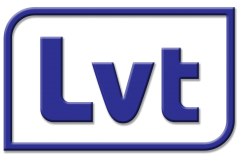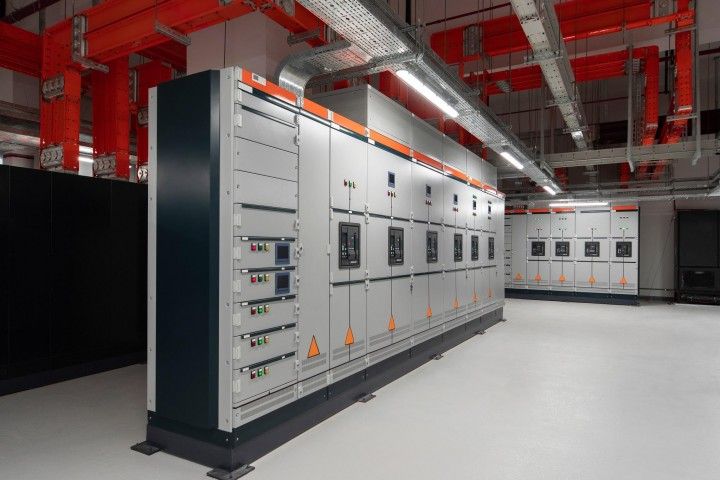IEC 61439-1 Standard
LOW VOLTAGE SWITCHGEAR and CONTROLGEAR
PART 1: GENERAL RULES
The most important of the design verification processes applied to the low voltage panels is the result of the type tests; "Verification tests".
In order for comparison or calculation methods to be applied, our evaluation must be based on a low voltage board that has completed type tests.
Panel type tests should be carried out by independent test laboratories with Accreditation in IEC 61439 series standards and they should be certified by product certification bodies that have Accreditation in IEC 61439 series standards.
The switchgear/controlgear type test also refers to the tests to be taken in order to obtain “LVTCERT Certificate”.
The LVTCert product certificate aims to increase the manufacturers that perform both the test and production and quality management processes in accordance with national and international standards. The complete execution of type tests is a prerequisite for having LVTCert certificate.
Two standards are required in determining all the rules and corresponding verification methods for each type of low voltage switchgear and controlgears :
- General rules for switchgears and controlgear : IEC 61439-1
- Product standard within IEC 61439 series.
The following sections are foreseen to configure the IEC 61439 standard series:
a) IEC 61439-1: General rules,
This part of IEC 61439 lays down the general definitions and service conditions, construction requirements, technical characteristics and verification requirements for low-voltage switchgear and controlgear assemblies. NOTE Throughout this document, the term assembly(s) (see 3.1.1) is used for a low-voltage switchgear and controlgear assembly(s). For the purpose of determining assembly conformity, the requirements of the relevant part of the IEC 61439 series, Part 2 onwards, apply together with the cited requirements of this document. For assemblies not covered by Part 3 onward, Part 2 applies. This document applies to assemblies only when required by the relevant assembly standard as follows: – assemblies for which the rated voltage does not exceed 1 000 V AC or 1 500 V DC; – assemblies designed for a nominal frequency of the incoming supply or supplies not exceeding 1 000 Hz; – assemblies intended for indoor and outdoor applications; – stationary or movable assemblies with or without an enclosure; – assemblies intended for use in connection with the generation, transmission, distribution and conversion of electric energy, and for the control of electrical energy consuming equipment. This document does not apply to individual devices and self-contained components such as motor starters, fuse switches, power electronic converter systems and equipment (PECS), switch mode power supplies (SMPS), uninterruptable power supplies (UPS), basic drive modules (BDM), complete drive modules (CDM), adjustable speed power drives systems (PDS), and other electronic equipment which comply with their relevant product standards. This document describes the integration of devices and self-contained components into an assembly or into an empty enclosure forming an assembly. For some applications involving, for example, explosive atmospheres, functional safety, there can be a need to comply with the requirements of other standards or legislation in addition to those specified in the IEC 61439 series.
b) IEC 61439-2: Power switchgear and controlgear assemblies
c) IEC 61439-3:Distribution boards intended to be operated by ordinary persons (DBO)
d) IEC 61439-4: Particular requirements for assemblies for construction sites (ACS)
e) IEC 61439-5: Assemblies for power distribution in public networks
f) IEC 61439-6: Busbar trunking systems (busways)
g) IEC 61439-0: Guidance to specifying assemblies
IEC 61439-1 standard defines 12 types of tests and 9 routine tests as a construction and performance rule that ensures safety of life, property and safety. Instead of the "Panel type test" and "partial type test" found in the old standard (IEC 60439-1), the new standard (IEC 61439-1) required the "Design verification" for all low voltage switching and control panel designs. The original manufacturer must make the original design and verification of the panel in accordance with the relevant panel standard. The panel manufacturer is defined as the organization that takes responsibility for the panel that has been manufactured. The original manufacturer must notify the final manufacturer with the documents that he will prepare his own design and assembly rules for the panels he has produced, tested and documented. The panel type test is performed on a representative sample of the clean and new condition board. The performance of the sample may be affected by validation tests (eg short circuit test). These experiments should not be carried out on a panel intended to be in operation.
IEC 61439-1 Verification of the design (Panel type test) should include the following.
- Strength of materials and parts
- Degree of protection of assemblies
- Clearances and creepage distances
- Protection against electric shock and integrity of protective circuits
- Incorporation of switching devices and components
- Internal electrical circuits and connections
- Terminals for external conductors
- Dielectric properties
- Temperature-rise
- Short-circuit withstand strength
- Electromagnetic compatibility
- Mechanical operation
a) Constructional requirements
1.Strength of materials and parts:
It should be accepted that the mechanical, electrical and thermal capability of the sample sections and structural materials are verified by verification of their construction and performance characteristics.
This section is divided into 6 tests among themselves.
1.1.Resistance to corrosion:
It is made to verify the corrosion resistance of internal and external ferrous metallic parts of the PANEL and representative samples of ferrous metallic enclosures.
1.2.Properties of insulating materials:
This section is divided into two among themselves.
1.2.1.Verification of the thermal stability of the enclosures:
The thermal stability of the enclosures made of insulated material is verified by the dry temperature test.
1.2.2.Verification of the resistance of insulating materials to abnormal heat and fire caused by internal electrical effects:
a) in the sections of the PANELS or
b) in the sections taken from these sections;
A glow wire test is performed to verify the suitability of the materials.
1.3.Resistance to ultraviolet (UV) radiation :
It is a test for external panels made of insulating material or metal covered with fully synthetic materials.
1.4.Lifting:
It is an experiment to verify that the boards are equipped with the appropriate lifting device during transportation. The test is carried out by loading 1.25 times the declared load.
1.5.Verification of protection against mechanical impact:
It is made to verify the compliance of the panels to the degree of protection provided by the enclosure of the enclosure against external mechanical impacts. The hammer left from a certain height should not impair the degree of declaration protection of the sample.
1.6.Marking:
The test is applied to the panel label with 15 seconds of water and 15 seconds of petroleum ether. Markings should be easily readable after 30 seconds.
2.Degree of protection of assemblies:
IP testing is carried out in accordance with IEC 60529 to verify protection against access to hazardous parts, protection against foreign solid objects, and protection against water.
3.Clearances and creepage distances:
The test is carried out to verify that the declared impulse withstand voltage for the insulation intervals is sufficient to provide the rated insulation stress for the surface leakage path lengths.
4.Protection against electric shock and integrity of protective circuits:
It is verified that the exposed conductive sections of the board are effectively connected to the external protective conductor and the circuit resistance does not exceed 100 mΩ.
5.Incorporation of switching devices and components:
Confirmed by the original manufacturer's inspection.
6.Internal electrical circuits and connections:
Confirmed by the original manufacturer's inspection.
7.Terminals for external conductors:
Confirmed by the original manufacturer's inspection.
b) Performance
1.Dielectric properties:
The ability to withstand transient overvoltages is verified. High voltage application is made according to the standard. There should be no jumping and puncture.
2.Temperature-rise:
The switchgear is made to confirm whether it overheats while carrying its own rated current. It should not exceed the limits in the standard.
3.Short-circuit withstand strength:
The ability of the switchgear to withstand thermal and dynamic stresses due to short circuit currents in the rated value is verified.
4.EMC:
The behavior of the boards against the signals originating from the air and the line is verified. EMC tests generally look at the effect of the device on the device. There are 2 types of tests, immunity and emission tests (from air and line)
5.Mechanical operation:
The door is made to verify that the locks and hinges are working satisfactorily.

